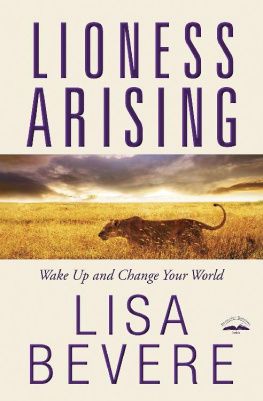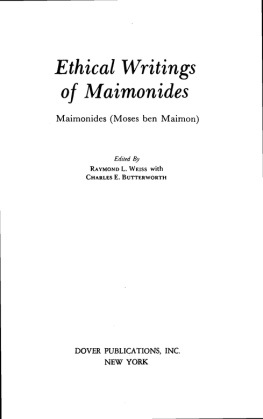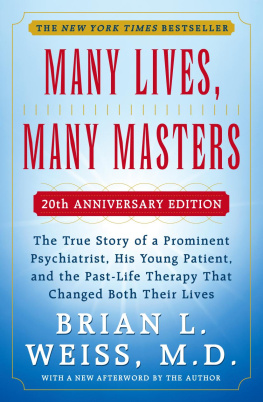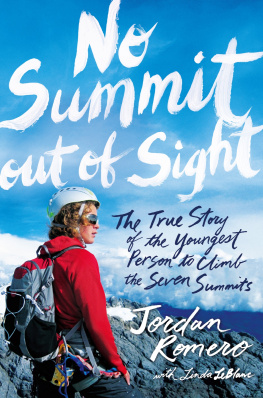Columbia University Press
Publishers Since 1893
New York Chichester, West Sussex
cup.columbia.edu
Copyright 2015 Ann Burack-Weiss
All rights reserved
E-ISBN 978-0-231-52533-6
Excerpt of MFK Fishers Last House. Copyright 1995.
Used by permission of the Literary Trust of MFK Fisher c/o InkWell Management.
Library of Congress Cataloging-in-Publication Data
Burack-Weiss, Ann.
The lioness in winter : writing an old womans life / Ann Burack-Weiss.
pages cm
Includes bibliographical references.
Summary: Ann Burack-Weiss, a gerontologist with more than forty years of experience, analyzes and engages with the writings of a dozen well-known authors for insights into old age. Featured are Maya Angelou, Colette, Simone de Beauvoir, Joan Didion, M.F.K Fisher, Doris Grumbach, Carolyn Heilburn, Doris Lessing, Florida Scott-Maxwell, May Sarton, Anne Roiphe, and Alix Kate Shulman, among others, all of whom wrote about essential issues in old age including physical changes and disability, living alone, reflecting on and revaluing the past, generativity, public life, and the changing roles of family and friends. Burack-Weiss frames including an introduction that discusses narrative theory and older woman Provided by publisher.
ISBN 978-0-231-15184-9 (cloth : alk. paper) ISBN 978-0-231-15185-6 (pbk. : alk. paper) ISBN 978-0-231-52533-6 (e-book)
1. Old age in literature. 2. Older women in literature. 3. Aging in literature. 4. LiteratureWomen authorsHistory and criticism. 5. Life change events in literature. 6. Life cycle, Human, in literature. 7. Life change events in old age. I. Title. II. Title: Writing an old womans life.
PN56.04B87 2015
809.93354dc23
2015008944
A Columbia University Press E-book.
CUP would be pleased to hear about your reading experience with this e-book at .
Jacket design: Mary Ann Smith
Jacket images: Shutterstock
References to websites (URLs) were accurate at the time of writing. Neither the author nor Columbia University Press is responsible for URLs that may have expired or changed since the manuscript was prepared.
We tell ourselves stories in order to live. We look for the sermon in the suicide, for the social or moral lesson in the murder of five. We interpret what we see, select the most workable of the multiple choices. We live entirely, especially if we are writers, by the imposition of a narrative line upon disparate images, by the ideas with which we have learned to freeze the shifting phantasmagoria which is our actual experience.
JOAN DIDION, THE WHITE ALBUM
O NCE upon a time I was a young social worker making home visits to old people in Manhattan; people who had outlived their resourceshealth, money, familyand were now vulnerable and alone.
After I had made my way up flights of stairs in hallways covered in graffiti or emerged from an elevator that creaked ominously between floors, I would see a bent man or woman propped up in the doorway or an open latch with a distant voice beckoning me to come in and find my way to chair or bed.
Few were gladdened at the first sight of me. Why did they send you? You are much too young! What do you know about being old? I replied as my teachers had instructed me (and I was later to instruct scores of students): I dont know; but I want to. Please tell me how it is for you.
What emerged was Joan Didions phantasmagoria of experience, struggles to get through many of lifes daily tasks; a litany of unfiltered troubles from morning to night. I listened long and attentively and asked many questions before answering.
I expected that everyone would warm up when they heard of the array of services available to them: meals-on-wheels, home care, transportation, rehabilitation, money management, and the like. Some accepted the offer of aid; most were wary. They knew they needed help, but the idea of sacrificing even a bit of independence to receive it was hard to accept.
It was then that we moved from their actual experience to Didions narrative linethe stories they told themselves about how they got into this situation and what would happen next. Although most were eager to tell me stories starring their younger selves, there were few Scheherazades. The same one or two stories were told on each visit, beginning and ending in the same place, using virtually the same words, featuring the same cast of characters (the client and others in his earlier world), and depicting an encapsulated event. All bore the patina of oft-told tales.
As different as the particulars, were, each story had an underlying theme. These ran the gamut from pride in who they had been and what they had done to a lifelong sense of defeat.
Once again, I responded as my teachers had instructed me (and I was to instruct scores of students), by delving deeper into the story: I asked them to tell me about what happened before and after the event and to describe the characters and action more fully. In so doing, I hoped to evoke more of their inner livesdormant thoughts and feelings embedded in the story.
It rarely worked. Details of the experience had faded and only the fragile narrative line remained. The present had no narrative line at all. It was only a disconnected series of events that had to somehow be endured. For many old people, it was as if the story-making capacity faltered along with the capacity for independent functioning; as if the interpretive, sense-making mechanism had worn away along with the cartilage in their aged joints. With no connective tissue or padding to cushion daily experiences, they were left with the mental corollary of the osteoarthritic condition of bone on bone.
This was not always the case. And I relished the exceptionscurrent events converted into newly relevant minted stories that connected the individuals past with their present and dared even to reach into a future they would not live to see.
I recall my first visit to an eighty-seven-year-old woman who was both blind and paralyzed, conditions thatto my young mindseemed impossible enough to bear individually, inconceivable in combination. Asked what she needed help with, she pointed toward her radio. It had broken down and she could no longer listen to the news. The shop she had called offered to pick it up, take it away for repair, and return within the week. Impossible, she said, I need food for my mind!
There were often neighbors or other helpers present on succeeding visits, and I would find her drawing them out on what was going on in their lives. When we were alone, she recounted some of their experiences with pleasure. She was not immune to frustration or fear or lonely moments, but she seemed able to overcome them by continuing a lifelong pattern, connecting her life with that of others.
My final visit to her was in the hospital a week before her death. As it happened, her minister was there. How fortunate I had come just then; how much she had wanted the two of us to meet! We did different things but were really in the same line of workhelping people through hard times. We would surely be great friends. Standing at either side of the bed where she lay hooked up to innumerable tubes, the minister and I exchanged incredulous looks.












